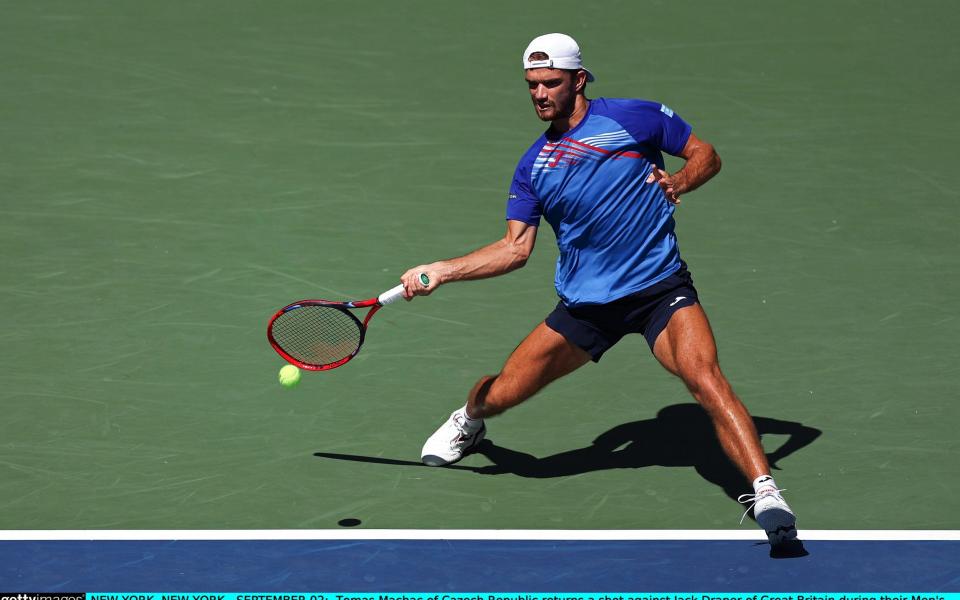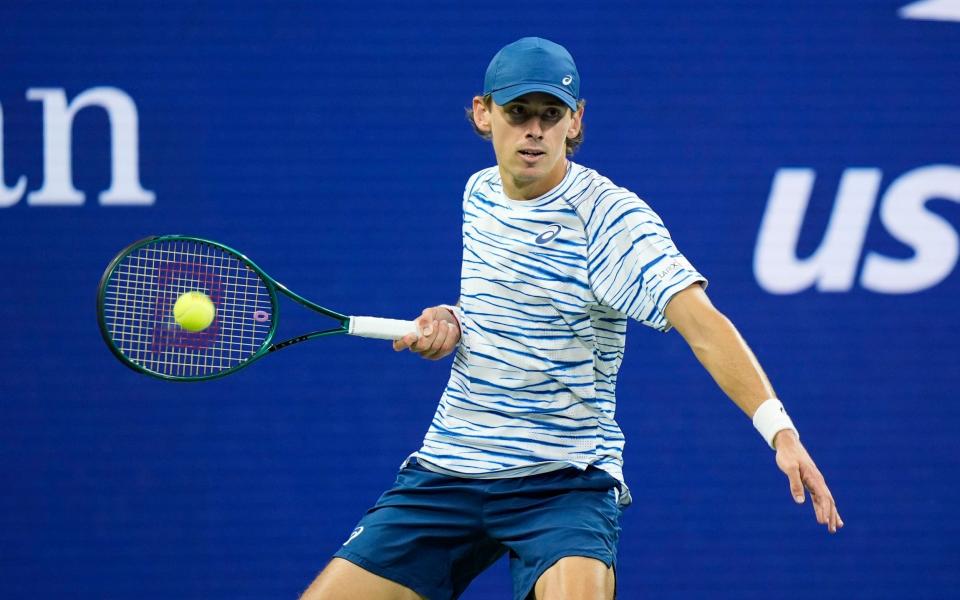
After Jack Draper advanced to the quarter-finals of the US Open with another landslide victory, you might have expected him to strut into the interview room with a big smile on his face.
But Draper’s main emotion was bewilderment. “I find it strange,” he said. “In some games I lose my concentration a little bit because I feel like everything is going fast and it’s going in my favour.”
After four matches in which he has lost serve only once and never been taken to a tie-break, Draper is struggling to understand why his opponents continue to self-destruct.
One could put that down to luck. After all, he has yet to face a seeded player and was spared the challenge of facing Wimbledon champion Carlos Alcaraz in the third round after the unheralded Dutchman Botic van de Zandschulp managed to prevail. The biggest Grand Slam surprise in years.
But there is something else going on here. We could see it clearly in the Victory in the 102nd minute against Tomas Machac; Draper sows confusion with his unconventional style of play. His four opponents look as baffled as newspaper readers who thought they had learned the quick crosswords, only to discover they were doing the cryptic crosswords instead.
That may be due in part to Draper’s improvements this summer, including his newfound willingness to get going and finish points at the net. His left-handedness is a major asset here. Three-quarters of break points come when the server is on the front side – the left side, as you look toward the receiver – and that’s the side where a lefty can deflect a slice serve off the court.
Time and again, Draper has curled his slider — what some pros call the “can opener” — toward the courtside scoreboards and then hit the net. Everyone knows it’s going to happen, but dealing with it is another matter.
The receiver has only a small gap to find on the line with his backhand. Machac managed to find that hole twice in Monday’s match, but never on one of his six break points. Draper therefore leads the standings with his total of 20 break points saved out of 21 in the tournament.
Unconventional groundstrokes
And then there are the groundstrokes. As a right-hander facing a left-hander, you normally want to send your forehand crosscourt—the staple shot of any pro—into his backhand wing. The idea is to hit first, before he has a chance to do the same to you.
The strange thing about Draper is that he writes and brushes his teeth with his right hand, the one that gives him the power and precision of his impervious backhand. Machac kept approaching the wing of the backhand, then being disconcerted when the ball came back with interest.


So, you play more forehand? Well, Draper misses that shot more often. But he also hits a good portion of his forehands for unanswered winners. And when he does play a rally shot, he hits it with a curious combination of topspin and sidespin that makes it difficult to line up.
When you’re sitting on the edge of the court, you can see the ball deflect sideways at the last moment. A careless opponent plants his feet too early and finds himself out of position for his next groundstroke.
Draper spoke this week about how easily these courts take spin. “They really suit my game, especially as a lefty,” he said after his second-round win over Facundo Diaz Acosta. “If someone slices a serve, they really come off the court.”
Wicked forehand
The same could be said of that vicious forehand, whose power comes not only from his arm but also from a powerful upward drive from his legs. There’s a hint of Rafael Nadal in the way Draper loads his forehand with arcing motions and topspin.
Excitement builds around Draperwho is the lowest-seeded man to reach the quarterfinals in New York. But today’s match against No. 10 seed Alex de Minaur will be a milestone.


A player who rarely gives you gifts, De Minaur will surely have had a left-handed training partner who hit sliders into the advantage court, and made sure he was ready to find that crucial backhand return down the line.
It will also be Draper’s first appearance on Arthur Ashe Stadium, the nation’s largest tennis court, which seats nearly 24,000. But his coach, James Trotman, says he has been preparing for this moment.
“He walks around there a bit when he comes in the morning,” Trotman told the BBC. “It’s an incredible pitch and he’s going to love playing on it. Playing on Armstrong (against Machac) helps because it’s a bigger pitch.”
“The noise, the court and the atmosphere will definitely be there at Ashe as well. There’s a great energy here at the US Open.”
